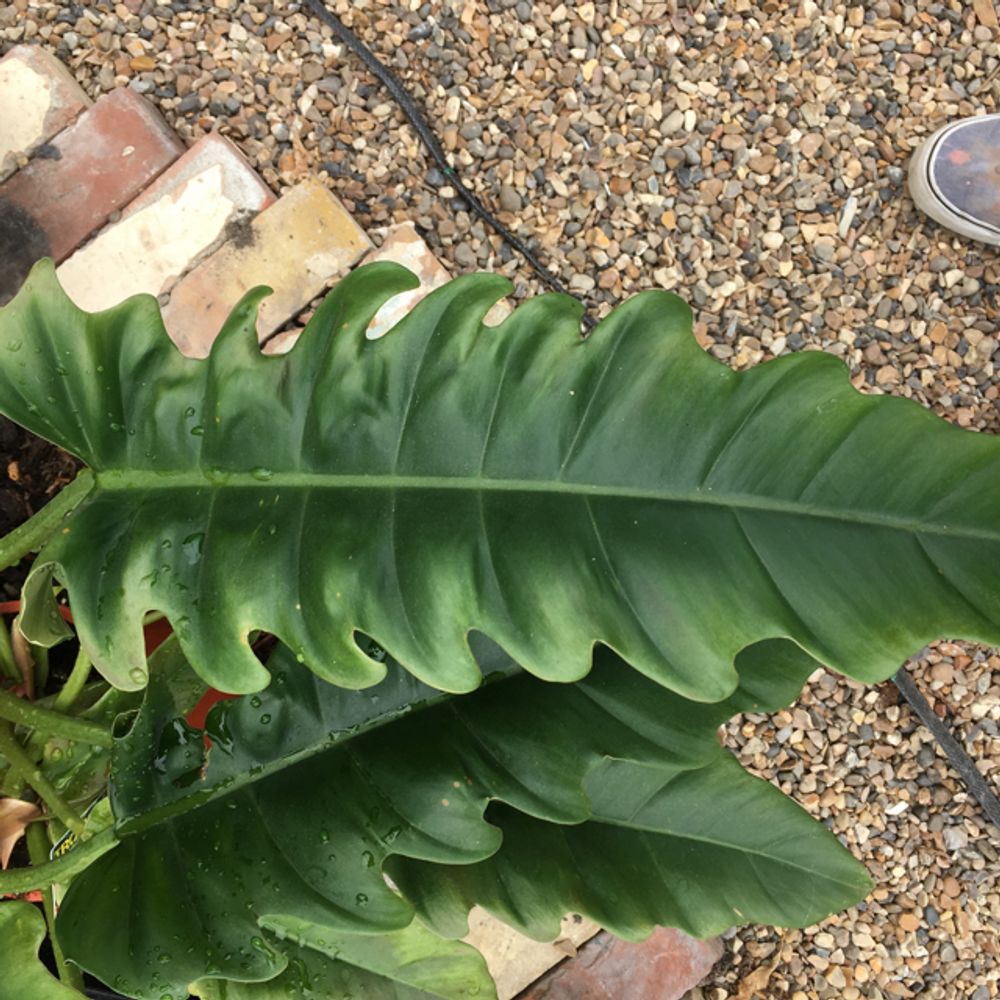Taro
(Alocasia)

Description
“Pet poisonous” - Toxic to Dogs Alocasia is a genus of broad-leaved rhizomatous or tuberous perennials from the family Araceae. There are 79 species native to tropical and subtropical Asia to Eastern Australia, and widely cultivated elsewhere. The large cordate or sagittate leaves grow to a length of 20 to 90 cm on long petioles. Their araceous flowers grow at the end of a short stalk, but are not conspicuous; often hidden behind the leaf petioles. The stem (a corm) is edible, but contains raphid or raphide crystals of Calcium oxalate along with other irritants (possibly a protease) that can numb and swell the tongue and pharynx resulting in difficult breathing, and sharp throat pain. The lower parts contain more of the poison. Prolonged boiling before serving or processing may reduce the risks but acidic fruit such as tamarind may dissolve them. Alocasia are tropical plants that are increasingly becoming popular as houseplants. The hybrid A. × amazonica has gained the Royal Horticultural Society's Award of Garden Merit. They are typically grown as pot plants, but a better way is to grow the plants permanently in the controlled conditions of a greenhouse. They do not do well in the dark and need good lighting if inside the house. They should be cared for as any other tropical plant with weekly cleaning of the leaves and frequent fine water misting without leaving the plants wet. They rarely survive cold winters or the dryness of artificial heating, but an attempt to slowly acclimatize plants from the summer garden to the house can help. Once inside, the watering period must be reduced and the plants should be protected from spider mites or red spider attack.
Taxonomic tree:







